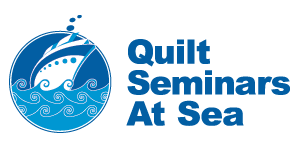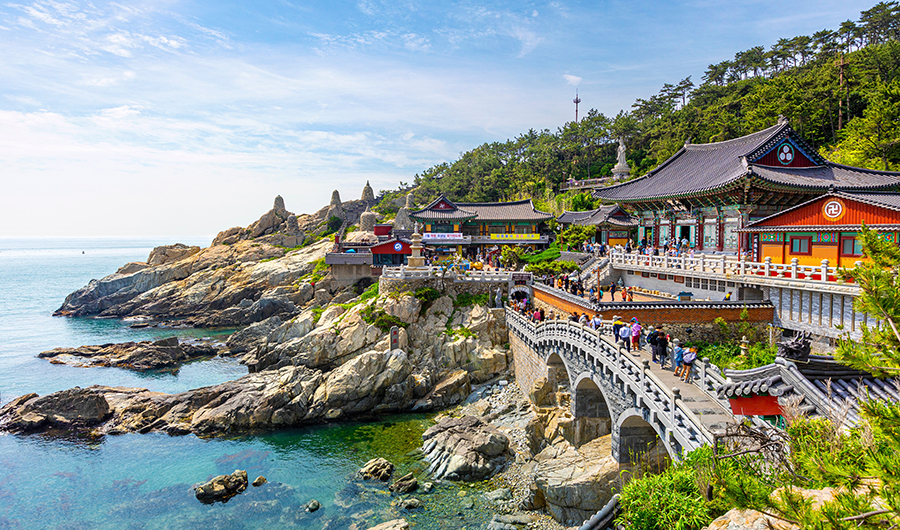Dear Quilters and Friends,
We are excited to travel back to Japan and South Korea again in March of 2025 from Tokyo to Yokohama! Join us for this special fourteen-day sailing where we will cruise on Holland America Line’s wonderful Vista Class ship, the Noordam. You’ll be part of a warm group of fun-loving people sharing a common interest in quilting, and have an opportunity to make new friends, one quilter at a time!
Our classes are held during “at sea” days and we make every attempt to schedule classes outside of port time. There are a variety of classes from which to choose, taught by two renown instructors in the world of quilting: Sue Nickels and Paula Nadelstern!
Quilting and “sewcializing”
There’s something wonderful awaiting you in every port of call! You can play tourist, choosing your pleasure whether it be walking, touring or shopping! Onboard ship you will have the opportunity to perfect your quilting skills with our class choices from two fabulous teachers, as well as myriad opportunities for “SEWCIALIZING” with other people who all share your love of quilting!
Ports of Call
Tokyo – Before you set out on your cruise, take in Tokyo’s many attractions. Tokyo is the largest city on earth and packed with some of the world’s best shops, museums and restaurants, big and small. While the bright neon lights and the bustle of contemporary Tokyo may be what comes to mind when you think of the city, there is another side. Tokyo’s historic gardens and neighborhoods of traditional homes on narrow lanes speak to a timeless Japan that has survived into the 21st century.
Kagoshima – Situated at the southern tip of Japan, Kagoshima is the capital of the prefecture of the same name and famous for its dramatic views of Sakurajima, an active volcano that smolders across the bay. One of the most popular activities is taking a ferry to Sakurajima and hiking on the 100-year-old lava flow that is now a grassy peninsula. Kagoshima, however, offers much more than the volcano’s almost overwhelming beauty. The food scene provides opportunities to experience the area’s rich culinary culture and features dishes using locally caught fish and regional specialties, like satsuma a’ge (deep-fried fish cake) and shōchū, a traditional beverage made at more than 100 distilleries in Kagoshima alone. Although the city was officially founded in 1889, it has an even longer history that is reflected in the 17th-century gardens of Sengan-en. More recent events are covered at a museum dedicated to the kamikaze pilots who flew out of Kagoshima. Other popular attractions include the City Aquarium, the Museum of the Meiji Restoration with its exhibits exploring local history and the City Museum of Art with its collection that covers both local contemporary and older art.
Nagasaki – Situated in the northwest of Kyushu, the third-largest island in Japan, Nagasaki is one of the country’s most cosmopolitan port cities, with a decent tourism infrastructure, a fascinating past that stretches back to the early 7th century and a picturesque harbor that’s been an active port since the 16th century. Home to around 500,000 residents, the city is a buzzy yet relaxed place with abundant services, shops and restaurants as well as several cultural and historic attractions that are easily explored on foot and via public transportation. Check out the Nagasaki Peace Park and Atomic Bomb Museum, which outline the horrific bombing of the city during World War II while making a poignant pledge for world peace. Foodies will enjoy the wide variety of tastes to be found in Chinatown and the Shianbashi Gourmet Street. If you are visiting with children, the Huis Ten Bosch theme park—modeled on a medieval Dutch town—makes for a fun diversion. Look out, too, for popular annual events like October’s Kunchi Festival and the wintertime Nagasaki Lantern Festival.
Busan (Pusan) – South Korea’s second-largest city (after the capital, Seoul), Busan is located in the southeastern corner of the country along the Sea of Japan. It combines a vibrant, big-city atmosphere with a famously laid-back attitude and subtropical landscapes. Often described as the ‘San Francisco of Korea,’ thanks mainly to its hilly terrain and close-knit neighborhoods, it offers visitors a little of everything: fashionable boutiques, dynamic culture and buzzy nightlife, as well as sandy beaches, hot springs and nearby mountains crossed with hiking trails and dotted with temples. Cultural highlights include the Gamcheon Cultural Village; the spectacular Haedong Yonggungsa Temple, built into the side of a cliff; and Art Street in Sinchang-dong, which hosts art competitions, exhibitions and cultural events such as the annual Busan International Film Festival. Those who enjoy hiking can explore the famed cliffs of Taejongdae Park, while the white sand beaches at Gwangalli and Haeundae are ideal places to relax by the seashore. Foodies will love Busan, too, not just for its excellent restaurants but also for the many atmospheric markets: the low-key Millak Hoe Town Market, tourist spots like Jagalchi Fish Market and the market at Haeundae with its ramshackle stalls selling gukpab (a traditional rice soup).
Jeju City – Jeju, formerly Cheju, may not be familiar to most Americans, but for Korean travelers the country’s largest island and home to one of 12 UNESCO World Heritage Sites is a popular destination. The island is roughly the size of Maui and has much in common with the Hawaiian islands. Like them, it is a volcanic island—it first emerged from the sea some two million years ago and the volcano Hallasan, which reaches a height of 1,950 meters, is the tallest peak in South Korea. It also shares the mild subtropical climate of Hawaii—even in winter, temperatures rarely drop below freezing—and offers a similar broad range of activities whether in the warm ocean water or exploring the island’s interior on well-marked and maintained trails. Jeju has long been known as the ‘Island of Gods’ after a legendary lost race from whom the island’s inhabitants are said to have descended. Perhaps this history helps explain the super-human feats of the haenyeo, women divers who harvest abalone from the sea floor without the use of scuba gear. Remarkable giants can still be spotted here with humpback and orca whales common in this part of the East China Sea.
Incheon (Seoul) – Once upon a time, Incheon was a quiet seaside village, pretty typical for Korea. The men went fishing, the women made kimchi. There were maybe a couple thousand people altogether in the region. And then it got caught in the middle of a war. Incheon is where, late in 1950, the U.S. Marines landed, marking the beginning of the end of the Korean War, a war that ultimately claimed more than 40,000 American soldiers’ lives and an undetermined number of Koreans. After the fighting, when Incheon had a chance to dig itself out from the mud and shrapnel, it became part of the Korean economic miracle, the country’s first official free-enterprise zone. With its perfect natural port, flat landscape and 3 million residents, it’s become as much a part of the Seoul megalopolis now as it is a place of its own. Visit Incheon with a Korean War vet, and they likely won’t recognize a thing, except maybe a small area around Freedom Park. Where once there were rice ponds, there are now high-rise apartment buildings. Even the beach the Marines landed on has been filled and reshaped to make more room for the Korean economic miracle. But there’s an entire generation haunted by this place, and it’s well worth looking around.
Hiroshima – Located in the southwest of Japan, Hiroshima, the main city of the Chugoku region, is set within a striking natural landscape of mountains, sea and rivers. Home to more than one million inhabitants, it’s famous as the site of the explosion of the world’s first atomic bomb, dropped by the U.S. in August 1945. This cataclysm is sensitively documented at the Hiroshima Peace Memorial Park and associated Hiroshima Peace Memorial Museum. The city offers visitors a great deal more than the tragedy of the recent past. In addition to the memorials to the events of World War II, there are an array of shrines and temples, as well as the city’s reconstructed castle, which was originally founded in the 16th century. Nature lovers will be charmed by the historic Shukkei-en Garden, commissioned in 1620, and Miyajima island, one of the most scenic spots in Japan. The city is home to a number of art institutions, including the Hiroshima Museum of Art, which houses a collection of Impressionist and Japanese oil paintings, the Hiroshima City Museum of Contemporary Art and the quirky Mazda Museum. There is also an array of excellent restaurants and bars—the city is known for its okonomiyaki, a type of savory pancake—as well as a popular oyster festival each year.
Kochi – High atop a hill in Kochi sits 17th-century Kochi Castle, once the seat of the Yamauchi lords. Explore this historic site and enjoy panoramic views of the city, then dine on sushi at Hirome Market.
Kobe – One of the greatest things about Japan is its attention to detail. Nothing is too small for consideration. Nailheads on temple walkways are hidden by inlaid metal covers. Shops sell combs and hairpins made with the same patterns and in the same way as 500 years ago. So maybe this attention to detail explains what happened in 20th-century Kobe. Some farmer was looking at his cow, thinking, “What possibilities of perfection am I missing?” Cows were still a new thing; they were banned as food almost until WWII, so cow rules were in flux when this farmer began massaging his herd with sake. The cows got pleasantly drunk on local beer and listened to classical music—and in return for the pampering, they produced, and continue to produce, heavily marbled, melt-in-the-mouth cuts of meat that can easily sell for a hundred bucks a dish. Like everything else in town, Kobe beef is all in the details. Among the Japanese, Kobe is considered exotic: “If you can’t go to Paris, go to Kobe.” And it does make a nice break from Osaka’s relentless pace. Order a steak, find a window booth and watch the details.’
Shimizu – Widely regarded as one of Japan’s most beautiful ports, Shimizu affords peerless views of Mount Fuji on a clear day and claims the scenic Miho-no-Matsubara pine forest as a backdrop (both are UNESCO World Heritage sites). The port’s temperate climate and rich culture—heavily connected to the surrounding Shizuoka region—have made it one of the country’s prime sightseeing destinations. A few of the main attractions include Kunozan Toshogu Shrine, designated a National Treasure by the Japanese government, Sumpu Castle (built in 1586) and Shizuoka Sengen Shrine, where warlord Tokugawa Ieyasu, who ushered in the Edo period, held his coming-of-age ceremony. Tokugawa shoguns ruled Japan for 250 years, until 1867. The broader region offers plenty in the way of picturesque coastal landscapes, tea plantations and a wealth of Buddhist temples and Shinto shrines, while the port itself—famed in the 1900s for its tea exports—is today best known for its prodigious tuna haul, the biggest in Japan, samples of which can be enjoyed in many of the port’s fantastic restaurants along with other local delicacies such as sakura shrimp and shirasu (whitebait).
Be Our Guest
For all of you that have sailed with us before, welcome back! For those of you that are new to the fabulous experience of quilting at sea, we look forward to getting to know you! Bring a friend, your spouse or your family – non-quilters are welcome to join us and they get a special discounted rate! We will make them feel especially welcome and there’s plenty for them to do while you are quilting! We are really looking forward to experiencing Japan and South Korea on this Quilt Seminar at Sea, and we hope you can join us!
Sincerely,
Sue Nickels and Paula Nadelstern
Alisa VandenBosch
Amy Ross
Group Coordinator
Quilt Seminars at Sea

